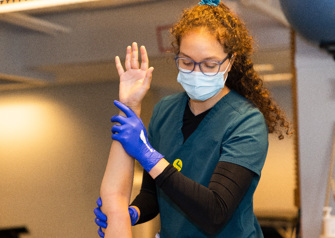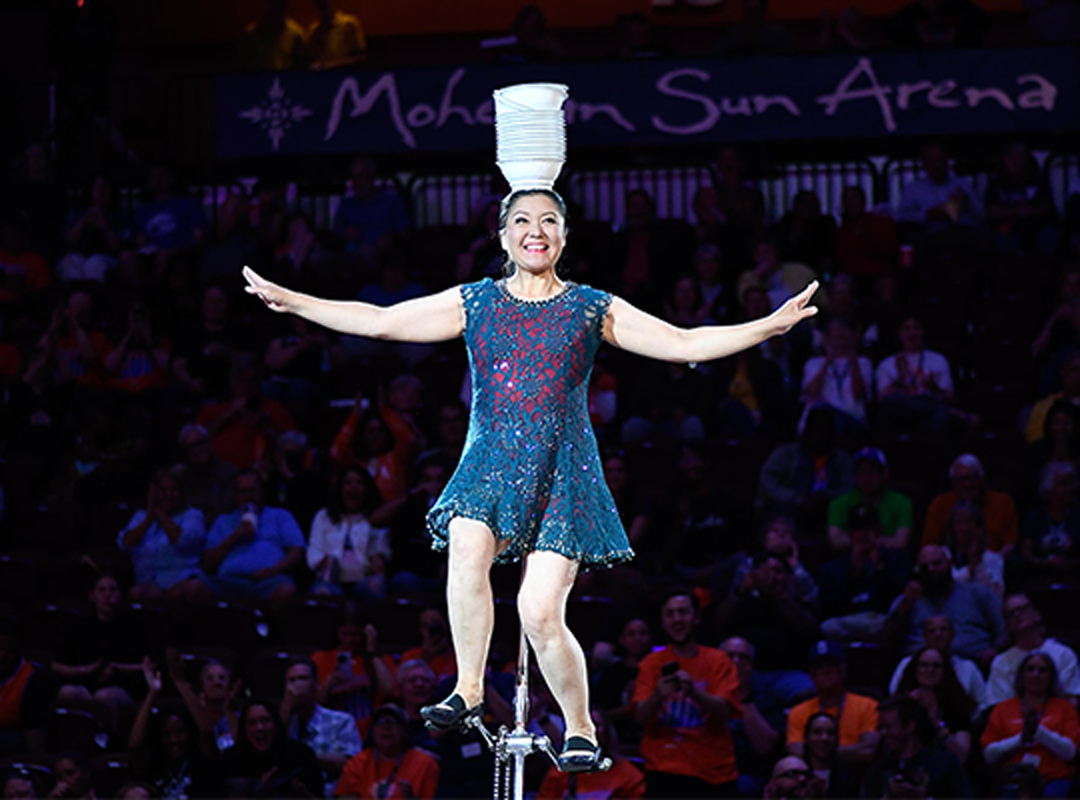
News
Celebrating Occupational Therapy Month
Date posted: 4/22/2021
Last updated: 4/22/2021
Since April is National Occupational Therapy Month, this is a great time to shine a spotlight on the more than 150,000 occupational therapists nationwide — and to better understand how the skilled Midwest Orthopaedics at Rush occupational therapists help their patients.
What’s the ‘occupation’ in ‘occupational therapy?
The phrase “occupation” in occupational therapy can be confusing. While occupational therapy (OT) can help you return more quickly to your job, it can more easily help you perform daily tasks anywhere. OT helps you improve fine and gross motor skills so you can carry out specific day-to-day activities at home or work.
When might I need occupational therapy?
Most often, occupational therapy is prescribed by a physician following an illness, incident, or accident as part of an overall rehabilitation program. The resulting issues can create barriers to participating in daily activities. Some of the things occupational therapists help people do are:
- Learn new ways of doing tasks
- Regain skills and develop new ones
- Use materials or equipment that make daily tasks easier
- Adapt their environment to better suit their needs
At Midwest Orthopaedics at Rush, our occupational therapists primarily assist patients with hand, wrist or elbow conditions that can limit the use of those parts of the body.
How is occupational therapy different from physical therapy?
You may wonder how occupational therapy is different from physical therapy. While physical therapy, also called PT, and OT are both types of rehabilitative care, OT strives to help people live as independently as possible and PT is used to assist a patient with pain relief and restoring motion and mobility. For example, someone who has had joint replacement surgery may visit a physical therapist as part of their recovery. The physical therapist works with the patient to help strengthen and increase the range of motion in the knee.
By contrast, an occupational therapist would help someone recovering from hand surgery relearn how to do daily tasks, like dressing, eating with utensils, or performing certain work activities. They may also make recommendations for changes in the home, like using a ‘reacher’ in the kitchen. In a nutshell, physical therapists help people restore physical function; occupational therapists focus on how that function affects the ability to do the things that are important to them.
Both occupational and physical therapists typically have advanced degrees and are required to pass a national certification exam to practice. All states require occupational and physical therapists to be licensed.
Is hand therapy the same as occupational therapy?
Hand therapy is a sub-specialty of occupational therapy and concentrates on treating orthopedic-based upper-extremity conditions to optimize the use of the hand and arm. OT/hand therapists at Midwest Orthopaedics at Rush specialize in addressing the biomechanical issues underlying upper-extremity conditions. All Midwest Orthopaedics at Rush occupational therapists either have a specialty certification in hand therapy or are working toward that goal.
They use an occupation-based approach that identifies what the patient wants to be able to do in daily life that is fulfilling, necessary, and/or meaningful — and makes the performance of those activities the goal of therapy. One patient may want to grip a tennis racquet and play competitively again, and another may just want to be able to use a fork on his or her own.
“Occupational therapists have special training to provide splints when needed and strategies to reduce swelling and pain,” explains Dr. Mark Cohen, hand, wrist and elbow surgeon at Midwest Orthopaedics at Rush. “They also offer unique modalities to help recover motion and function following injury, surgery and for general conditions such as arthritis.”
Conditions treated by occupational and hand therapists include:
- Fractures of the hand or arm
- Lacerations
- Amputations
- Burns
- Surgical repairs of tendons and nerves
- Tendonitis
- Rheumatoid arthritis and osteoarthritis
- Carpal tunnel syndrome
- Degenerative conditions
How do occupational therapists work with doctors?
Occupational therapists and physicians work very closely. At Midwest Orthopaedics at Rush, they are just down the hall from each other. Treating physicians collaborate with a patient’s occupational therapists to optimize his or her care.
“We are very fortunate to have occupational therapists on-site at our multiple locations,” explains upper extremity surgeon Dr. Xavier Simcock. “For post-operative care, I usually walk over to talk with the patient’s Occupational Therapist directly, so they know what is safe for the patient. Then, as the patient progresses, he or she gives me in-person updates or asks questions if concerned. In some cases, the occupational therapists come to the patient’s post-op visits too.”
Do I need a prescription?
While you do not need a prescription to get help from a physical therapist in Illinois and Indiana, you will need to see your doctor first to get a referral to occupational therapy. To schedule an appointment at Midwest Orthopaedics at Rush, click here to request online or call 877-MD-BONES.


